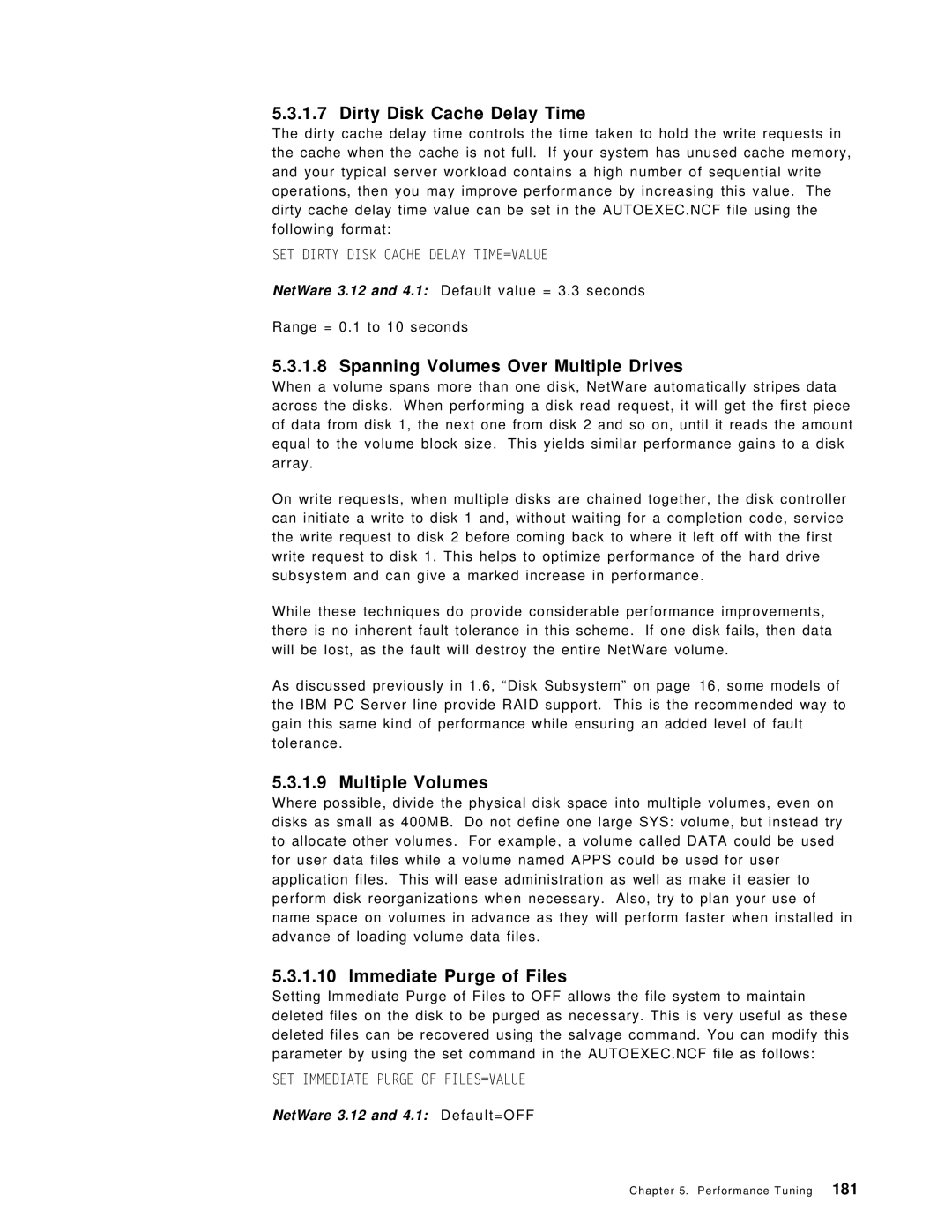5.3.1.7 Dirty Disk Cache Delay Time
The dirty cache delay time controls the time taken to hold the write requests in the cache when the cache is not full. If your system has unused cache memory, and your typical server workload contains a high number of sequential write operations, then you may improve performance by increasing this value. The dirty cache delay time value can be set in the AUTOEXEC.NCF file using the following format:
SET DIRTY DISK CACHE DELAY TIME=VALUE
NetWare 3.12 and 4.1: Default value = 3.3 seconds
Range = 0.1 to 10 seconds
5.3.1.8 Spanning Volumes Over Multiple Drives
When a volume spans more than one disk, NetWare automatically stripes data across the disks. When performing a disk read request, it will get the first piece of data from disk 1, the next one from disk 2 and so on, until it reads the amount equal to the volume block size. This yields similar performance gains to a disk array.
On write requests, when multiple disks are chained together, the disk controller can initiate a write to disk 1 and, without waiting for a completion code, service the write request to disk 2 before coming back to where it left off with the first write request to disk 1. This helps to optimize performance of the hard drive subsystem and can give a marked increase in performance.
While these techniques do provide considerable performance improvements, there is no inherent fault tolerance in this scheme. If one disk fails, then data will be lost, as the fault will destroy the entire NetWare volume.
As discussed previously in 1.6, ªDisk Subsystemº on page 16, some models of the IBM PC Server line provide RAID support. This is the recommended way to gain this same kind of performance while ensuring an added level of fault tolerance.
5.3.1.9 Multiple Volumes
Where possible, divide the physical disk space into multiple volumes, even on disks as small as 400MB. Do not define one large SYS: volume, but instead try to allocate other volumes. For example, a volume called DATA could be used for user data files while a volume named APPS could be used for user application files. This will ease administration as well as make it easier to perform disk reorganizations when necessary. Also, try to plan your use of name space on volumes in advance as they will perform faster when installed in advance of loading volume data files.
5.3.1.10 Immediate Purge of Files
Setting Immediate Purge of Files to OFF allows the file system to maintain deleted files on the disk to be purged as necessary. This is very useful as these deleted files can be recovered using the salvage command. You can modify this parameter by using the set command in the AUTOEXEC.NCF file as follows:
SET IMMEDIATE PURGE OF FILES=VALUE
NetWare 3.12 and 4.1: Default=OFF
Chapter 5. Performance Tuning 181
